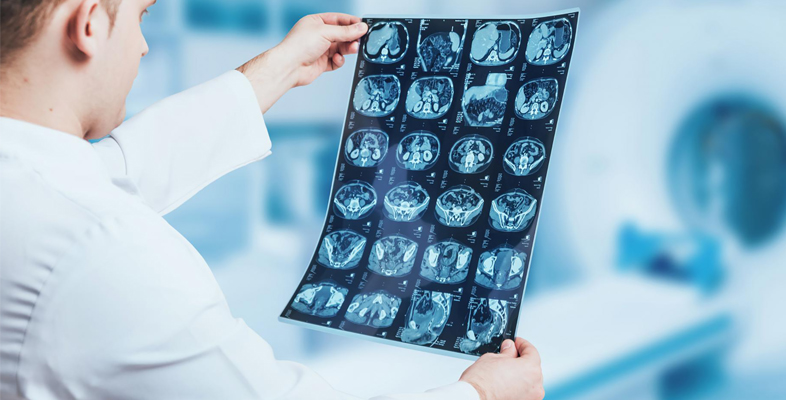3.4 Contrast in MRI
Factors that influence contrast in an MR image are often referred to as intrinsic and extrinsic. Intrinsic contrast will depend on the proton density.
This is directly related to the number of hydrogen atoms in the different voxels that make up the imaging slice. For this reason, it is also referred to as proton density contrast (or PD contrast). A key factor for this type of contrast is the water content of different tissues – although the variations in soft tissue are not major.
For example, the water contents of brain grey matter, brain white matter, heart tissue and blood are approximately 71%, 84%, 80% and 93% by mass, respectively. Conversely, bone is only 12% water by mass and will always appear dark in MR images.
If intrinsic contrast was the only factor that determined ‘dark to light’ in an MR image, the clinical versatility of the technique, such as the ability to distinguish cancerous tissues, would be very limited.
However, there are additional factors which can influence NMR signal intensity, and these can be exploited in the design of an imaging sequence. To fully understand these extrinsic factors requires a further appreciation of relaxation processes – the mechanisms by which nuclear spins return to the ground state following excitation.
As you’ll see, relaxation characteristics vary for the different tissues in the body.
